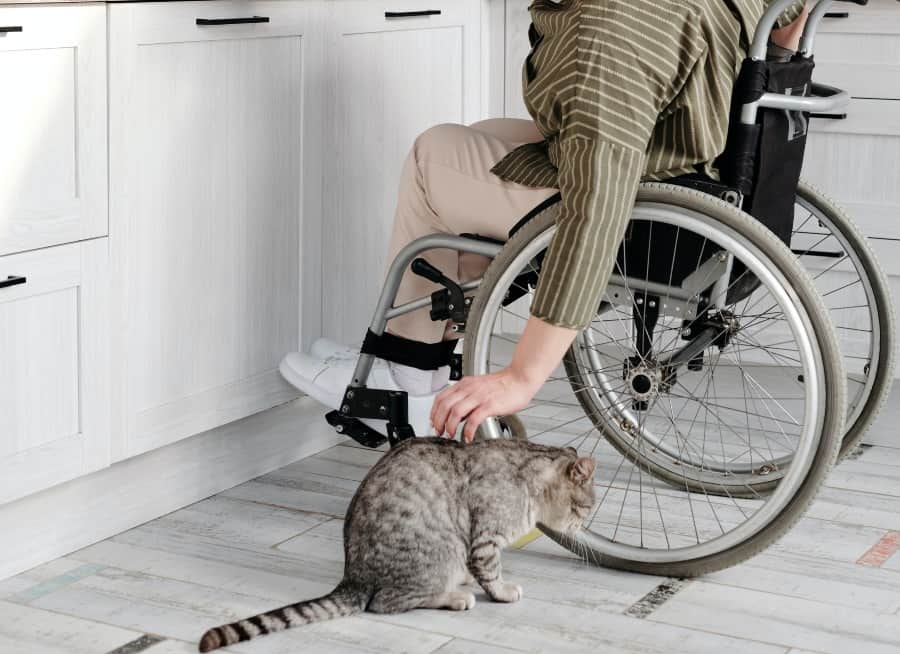Specialist Disability Accommodation (SDA) housing plays a crucial role in providing suitable living arrangements for individuals with complex needs or disabilities.
SDA aims to offer safe, accessible, and tailored housing solutions that support independence and enhance the quality of life for people with disabilities. In this detailed guide, we’ll explore how SDA housing works, the eligibility criteria, the different types of SDA, and the benefits it offers to residents and the broader community.
Understanding SDA Housing: SDA housing refers to purpose-built or modified accommodation designed to meet the specific needs of people with disabilities who require specialized housing solutions.
SDA aims to provide suitable living environments that cater to a range of disability-related needs, including mobility impairments, sensory impairments, intellectual disabilities, and complex support requirements.
Key Components of SDA Housing
To understand how SDA housing works, it’s essential to consider its key components:
- Accessibility Features: SDA properties are designed or modified to incorporate accessibility features such as ramps, widened doorways, accessible bathrooms, and assistive technology to support residents with mobility impairments and other disabilities.
- Support Services: SDA housing may be accompanied by support services provided by disability service providers, including personal care, health management, meal preparation, and social inclusion activities tailored to the needs of residents.
- Tenancy Arrangements: SDA housing may be offered under different tenancy arrangements, including leases, licenses, or occupancy agreements, depending on the specific model of accommodation and funding arrangements.
- Funding Models: SDA housing may be funded through various mechanisms, including government subsidies, private investment, philanthropic funding, and contributions from residents or their families.
Types of SDA Housing
SDA housing encompasses a range of accommodation options designed to meet the diverse needs of people with disabilities. Some common types of SDA include:
- Purpose-Built Dwellings: These are newly constructed properties specifically designed and built to meet the accessibility and support requirements of people with disabilities. Purpose-built dwellings may include features such as fully accessible bathrooms, wheelchair-friendly design, and specialized equipment.
- Modified Existing Dwellings: These are existing properties that have been modified or retrofitted to make them suitable for people with disabilities. Modifications may include installing ramps, handrails, accessible bathrooms, and sensory aids to enhance accessibility and safety.
- Group Homes: Group homes are shared living arrangements where individuals with disabilities reside together and receive support from disability service providers. Group homes offer a supportive and communal living environment, allowing residents to access shared facilities and participate in group activities.
Eligibility for SDA Housing
To be eligible for SDA housing, individuals must meet certain criteria set out by the National Disability Insurance Scheme (NDIS). Eligibility criteria may include:
- Disability: Individuals must have a disability that significantly impairs their ability to carry out activities of daily living and requires specialized housing solutions.
- Assessment: Individuals may undergo a comprehensive assessment by the NDIS to determine their eligibility for SDA housing and the level of support they require.
- Funding Approval: Funding for SDA housing may be approved as part of an individual’s NDIS plan, which outlines the supports and services they are entitled to receive.
Benefits of SDA Housing
SDA housing offers numerous benefits for residents and the broader community, including:
- Improved Quality of Life: SDA housing provides residents with safe, accessible, and supportive living environments that enhance their independence, autonomy, and overall well-being.
- Enhanced Social Inclusion: SDA housing fosters social inclusion by providing opportunities for residents to connect with others, participate in community activities, and access support services tailored to their needs.
- Reduced Reliance on Institutional Care: SDA housing enables individuals with disabilities to live in the community rather than in institutional settings, promoting greater choice, control, and participation in everyday life.
- Cost Savings: SDA housing can result in cost savings for the government and the healthcare system by reducing reliance on hospitalization, residential aged care, and other institutional care options.
Conclusion
SDA housing plays a vital role in meeting the housing needs of people with disabilities and promoting social inclusion, independence, and community participation. By providing safe, accessible, and supportive living environments tailored to individual needs, SDA housing enhances the quality of life for residents and contributes to a more inclusive and equitable society.
As demand for SDA housing continues to grow, it’s essential to invest in the development of innovative and sustainable housing solutions that meet the diverse needs of people with disabilities and empower them to live fulfilling and meaningful lives.








